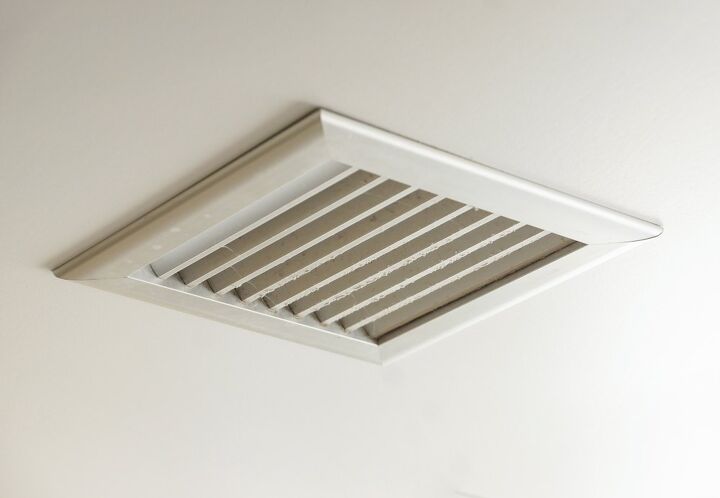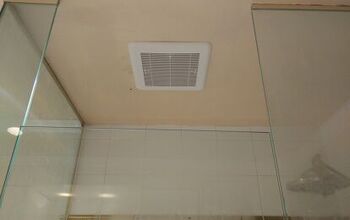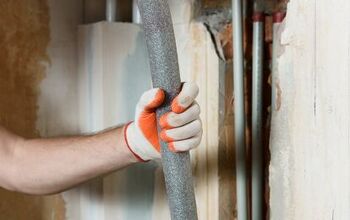Can You Put Insulation Around A Bathroom Exhaust Fan?

Bathrooms need to be vented properly, and it’s this fact which led to the bathroom exhaust fan being created. A bathroom exhaust fan is attached to a building’s exterior, and it’s connected to the bathroom by ductwork.
A bathroom exhaust fan will remove stale, impure, and humid air, thereby making the air quality better. Bathroom exhaust fans also get rid of excess moisture, odors, and pollutants. Moreover, they hasten the evaporation process for water that has accumulated already.
You’ll be more comfortable in the bathroom if you have good ventilation, and your walls and fixtures may last longer if they’re not constantly subjected to humid air. But to work properly, do exhaust fans need to be insulated? Such is the question this article answers.
Yes, you can put insulation around a bathroom exhaust fan. In fact, doing so is essential. If you don’t put insulation around the exhaust fan, then condensation can build up in the system and eventually leak out. This not only causes destruction but can also be a pain to deal with. If there’s already insulation present, adjusting it will probably fix the problem.
Do You Need Ducts or Vents Installation or Replacement?
Get free, zero-commitment quotes from pro contractors near you.

Why Ensuring There’s Proper Insulation Is Important
It’s important to insulate around the exhaust fan. If you don’t do this, you may be facing water stains and/or mold growth down the road. Those who don’t insulate around their bathroom exhaust fans understand their error quite quick, as it won’t take long for water to accumulate when there’s insufficient insulation.
You can avoid a disastrous situation if you take the time to ensure your bathroom ventilation system is sound from start to finish. And a big part of this is ensuring the area around the fan is insulated.
But before you purchase insulation for the fan, you must first make sure that the leaks are the result of poor insulation. There may be something wrong with the system’s vent cap, and usually an indication of this is a leak. But to be sure, if you see brown stains on the ceiling above the bathroom, know there’s a leak coming from somewhere.
If you know your system isn’t properly insulated, it’s quite likely the insulation—or lack thereof—is the problem. If the space around the exhaust vent fan is not insulated properly, moist air will condense inside the ducts and eventually leak.
Insulating a Bathroom Exhaust Fan: What to Do
You can insulate a bathroom exhaust fan by yourself, as you probably already have all the tools necessary to do this. Just make sure you have a clear understanding of what needs to be done before you start tinkering with the exhaust fan. And if you don’t feel confident that you can insulate on your own, get a professional to do this for you.
Here are the items you’ll need to properly insulate your bathroom exhaust fan:
- A flashlight
- Gloves
- Duct Insulation
Adjusting Preexisting Insulation vs. Installing New Insulation
If there’s insulation present and you’re still experiencing a leak, it may be that some adjusting is needed. Insulation can be fastened using aluminum tape or zip ties. Try the tape first and if this doesn’t work then go with the zip ties.
Aluminum tape will withstand the heat that’ll come through the ducts, and it can also provide more security than the zip ties. This isn’t to say zip ties don’t provide adequate security—they do!
If the area around the fan is not insulated at all, then you’ll have to apply the insulation on your own. Installing insulation fresh isn’t all that different from adjusting preexisting insulation. Just make sure that the insulation is snuggly around the exhaust fan.
When a Bathroom Exhaust Fan Isn’t Run Often
If after you rearrange the duct insulation you find that there’s still a leak, this may be because you’re not running the fan often enough. While it may sound absurd, not using the fan can actually cause condensation buildup. If you have a guest bathroom in your home and it’s not used often, be aware of this problem.
Why This Happens
The bathroom exhaust fan utilizes a component known as a damper, and this component is supposed to prevent outside air from getting in the fan. For the most part, it does just that, but it can’t totally prevent outside air from entering the ductwork.
Even if you run your fan often, you can’t avoid warm air building up in the duct. And on cold/rainy days, warm air is likely to condense inside the ductwork.
Keeping Condensation in Check
While it’s impossible to totally prevent condensation buildup, you can use a timer to run the ventilation system for a predetermined period. Just make sure the exhaust fan is properly insulated before you do this. If it isn’t, you’ll have a leak, not because of system inactivity but because of poor insulation.
Traditional Ductwork Alternatives
Traditional ductwork isn’t the only thing that can connect a bathroom exhaust fan to the bathroom. You could also use flexible aluminum ductwork, but this isn’t a popular option because it doesn’t support a lot of weight.
Or you could opt to have insulated HVAC ductwork. This ductwork is constructed with a sealable vapor barrier, and this helps with preventing condensation and also improves airflow.
While you could install this ductwork on your own, you should have a professional plumber or an HVAC technician do this for you. Insulated HVAC ductwork is expensive and intricate. Moreover, you’ll want it working properly when it’s first set up, right?
Do You Need Ducts or Vents Installation or Replacement?
Get free, zero-commitment quotes from pro contractors near you.

What to Keep In Mind When Shopping for a Bathroom Exhaust Fan
Keep performance, style, and features in mind when you’re shopping for a bathroom vent fan. The vent should also be able to move a good amount of air. Air movement is typically measured in cubic feet per minute (CFM).
The accepted standard is 1 CFM per square foot of bathroom area. For bathrooms that are 50 square feet or smaller, a 50 CFM system will be adequate. A larger bathroom will need a fan that can move more air. Consult this chart to see what system your bathroom requires.

Matt loves everything DIY. He has been learning and practicing different trades since he was a kid, and he's often the first one called when a friend or family member needs a helping hand at home. Matt loves to work with wood and stone, and landscaping is by far his most favorite pastime.
More by Matthew Mountain



























